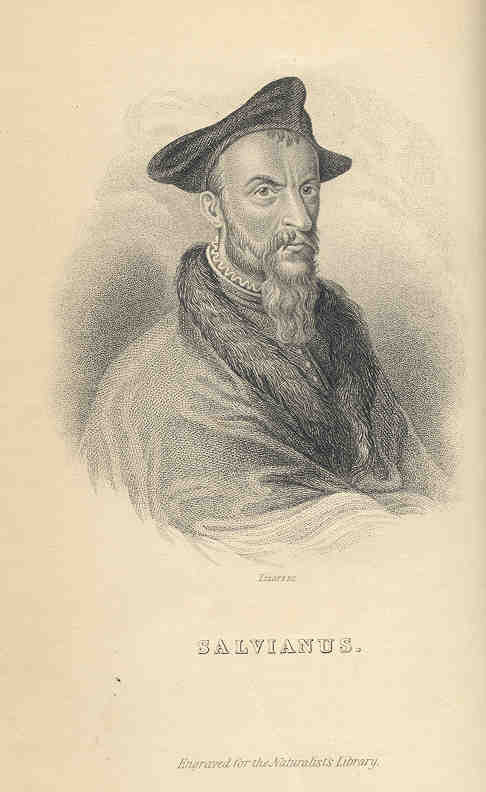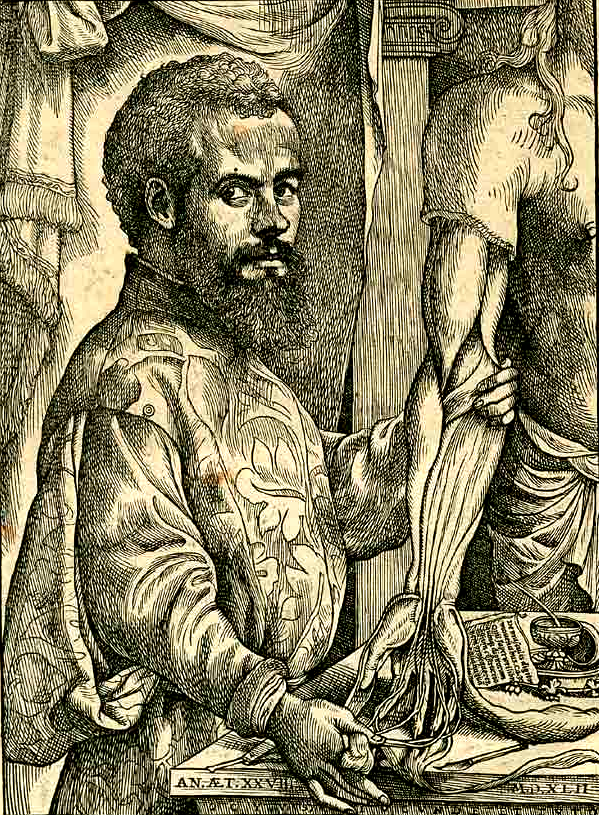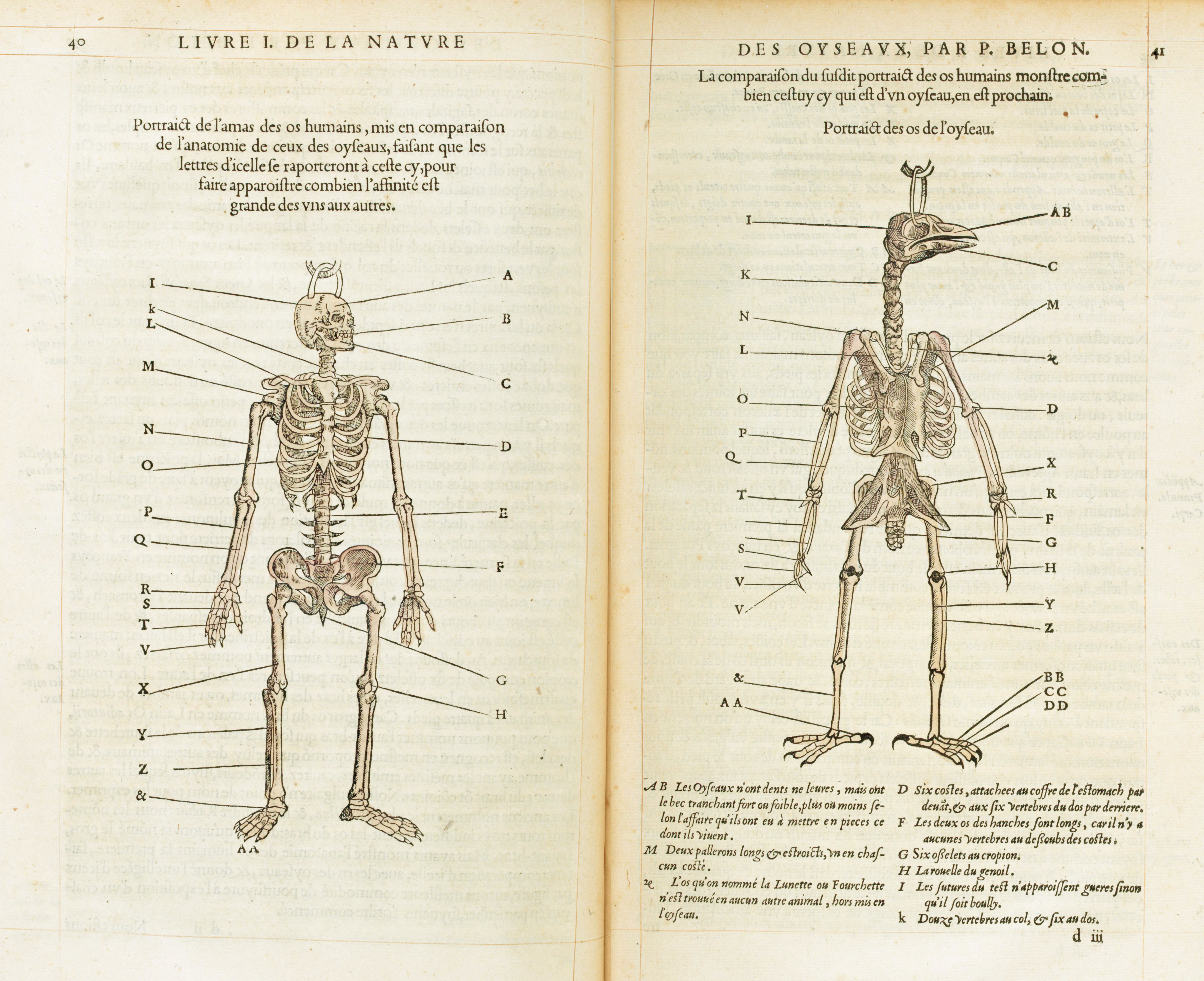|
Hippolito Salviani
Hippolito Salviani (1514–1572) was an Italian physician, scholar and naturalist, noted for his Renaissance book ''Aquatilium animalium historiae'', depicting about hundred Mediterranean fish species, some from Illyria, and a few mollusks. He also wrote works on medicine, such as that dealing with Galen's theory of crises, and a topical play. Salviani taught at the Sapienza University of Rome, University of Rome until 1568. From 1550 until 1555 he was chief physician to the House of Farnese and three successive popes, Pope Julius III, Pope Marcellus II and Pope Paul IV. Salviani was born in Città di Castello. He studied medicine, developing a great interest in ichthyology and in natural history generally. He enjoyed the financial support of Cardinal Cervini (later Pope Marcellus II), enabling him to explore the Mediterranean coastline. Cervini's death caused Salviani to dedicate the work to Pope Paul IV. Aristotle's work on fish species is one of the earliest known. In the 1 ... [...More Info...] [...Related Items...] OR: [Wikipedia] [Google] [Baidu] |
Guillaume Rondelet
Guillaume Rondelet (27 September 150730 July 1566), also known as Rondeletus/Rondeletius, was Regius professor of medicine at the University of Montpellier in southern France and Chancellor of the University between 1556 and his death in 1566. He achieved renown as an anatomy, anatomist and a naturalist with a particular interest in botany and ichthyology. His major work was a lengthy treatise on marine animals, which took two years to write and became a standard reference work for about a century afterwards, but his lasting impact lay in his education of a roster of star pupils who became leading figures in the world of late-16th century science. Early life and education Rondelet was born in Montpellier in 1507. His father was an , a combination of pharmacist, grocer and druggist. His father died while he was a child and he was brought up in the care of his elder brother.Planchon, J.É. (1866): 11 His health was poor until he reached the age of 18. He was educated in Montpellier ... [...More Info...] [...Related Items...] OR: [Wikipedia] [Google] [Baidu] |
16th-century Italian Physicians
The 16th century begins with the Julian year 1501 ( MDI) and ends with either the Julian or the Gregorian year 1600 ( MDC) (depending on the reckoning used; the Gregorian calendar introduced a lapse of 10 days in October 1582). The 16th century is regarded by historians as the century which saw the rise of Western civilization and the Islamic gunpowder empires. The Renaissance in Italy and Europe saw the emergence of important artists, authors and scientists, and led to the foundation of important subjects which include accounting and political science. Copernicus proposed the heliocentric universe, which was met with strong resistance, and Tycho Brahe refuted the theory of celestial spheres through observational measurement of the 1572 appearance of a Milky Way supernova. These events directly challenged the long-held notion of an immutable universe supported by Ptolemy and Aristotle, and led to major revolutions in astronomy and science. Galileo Galilei became a champion ... [...More Info...] [...Related Items...] OR: [Wikipedia] [Google] [Baidu] |
Italian Naturalists
Italian(s) may refer to: * Anything of, from, or related to the people of Italy over the centuries ** Italians, an ethnic group or simply a citizen of the Italian Republic or Italian Kingdom ** Italian language, a Romance language *** Regional Italian, regional variants of the Italian language ** Languages of Italy, languages and dialects spoken in Italy ** Italian culture, cultural features of Italy ** Italian cuisine, traditional foods ** Folklore of Italy, the folklore and urban legends of Italy ** Mythology of Italy, traditional religion and beliefs Other uses * Italian dressing, a vinaigrette-type salad dressing or marinade * Italian or Italian-A, alternative names for the Ping-Pong virus, an extinct computer virus See also * * * Italia (other) * Italic (other) * Italo (other) * The Italian (other) * Italian people (other) Italian people may refer to: * in terms of ethnicity: all ethnic Italians, in and outside of Italy * in ... [...More Info...] [...Related Items...] OR: [Wikipedia] [Google] [Baidu] |
People From Città Di Castello
A person ( : people) is a being that has certain capacities or attributes such as reason, morality, consciousness or self-consciousness, and being a part of a culturally established form of social relations such as kinship, ownership of property, or legal responsibility. The defining features of personhood and, consequently, what makes a person count as a person, differ widely among cultures and contexts. In addition to the question of personhood, of what makes a being count as a person to begin with, there are further questions about personal identity and self: both about what makes any particular person that particular person instead of another, and about what makes a person at one time the same person as they were or will be at another time despite any intervening changes. The plural form "people" is often used to refer to an entire nation or ethnic group (as in "a people"), and this was the original meaning of the word; it subsequently acquired its use as a plural form of per ... [...More Info...] [...Related Items...] OR: [Wikipedia] [Google] [Baidu] |
1572 Deaths
Year 157 ( CLVII) was a common year starting on Friday (link will display the full calendar) of the Julian calendar. At the time, it was known as the Year of the Consulship of Civica and Aquillus (or, less frequently, year 910 ''Ab urbe condita''). The denomination 157 for this year has been used since the early medieval period, when the Anno Domini calendar era became the prevalent method in Europe for naming years. Events By place Roman Empire *A revolt against Roman rule begins in Dacia. Births * Gaius Caesonius Macer Rufinianus, Roman politician (d. 237) * Hua Xin, Chinese official and minister (d. 232) * Liu Yao, Chinese governor and warlord (d. 198) * Xun You Xun You (157–214), courtesy name Gongda, was a statesman who lived during the late Eastern Han dynasty of China and served as an adviser to the warlord Cao Cao. Born in the influential Xun family of Yingchuan Commandery (around present-d ..., Chinese official and statesman (d. 214) Deaths ... [...More Info...] [...Related Items...] OR: [Wikipedia] [Google] [Baidu] |
1514 Births
Year 1514 ( MDXIV) was a common year starting on Sunday (link will display the full calendar) of the Julian calendar. Events January–June * January 10 – A great fire breaks out, in the Rialto The Rialto is a central area of Venice, Italy, in the ''sestiere'' of San Polo. It is, and has been for many centuries, the financial and commercial heart of the city. Rialto is known for its prominent markets as well as for the monumental Rialto ... of Venice. * March 12 – A huge exotic embassy sent by King Manuel I of Portugal to Pope Leo X arrives in Rome, including Hanno (elephant), Hanno, an Indian elephant. * March – Louis XII of France makes peace with Maximilian I, Holy Roman Emperor. * May 2 – The Poor Conrad peasant revolt against Ulrich, Duke of Württemberg begins in Beutelsbach (Weinstadt), Beutelsbach. * May 15 – The earliest printed edition of Saxo Grammaticus' 12th century Scandinavian history ''Gesta Danorum'', edited by Christi ... [...More Info...] [...Related Items...] OR: [Wikipedia] [Google] [Baidu] |
Cephalopod
A cephalopod is any member of the molluscan class Cephalopoda (Greek plural , ; "head-feet") such as a squid, octopus, cuttlefish, or nautilus. These exclusively marine animals are characterized by bilateral body symmetry, a prominent head, and a set of arms or tentacles (muscular hydrostats) modified from the primitive molluscan foot. Fishers sometimes call cephalopods "inkfish", referring to their common ability to squirt ink. The study of cephalopods is a branch of malacology known as teuthology. Cephalopods became dominant during the Ordovician period, represented by primitive nautiloids. The class now contains two, only distantly related, extant subclasses: Coleoidea, which includes octopuses, squid, and cuttlefish; and Nautiloidea, represented by ''Nautilus'' and ''Allonautilus''. In the Coleoidea, the molluscan shell has been internalized or is absent, whereas in the Nautiloidea, the external shell remains. About 800 living species of cephalopods have been ident ... [...More Info...] [...Related Items...] OR: [Wikipedia] [Google] [Baidu] |
Bernardus Aretinus
Bernardus is a Latinized form of the Germanic name Bernard. It has been a given name in the Netherlands since the 17th century, though bearers tend to use a short form in daily life, like ''Barend'', ''Ben'', ''Ber'', ''Berend'', ''Bernard'', ''Bert'', and ''Bertus''. People with this name include: ;Latinized names * Bernardus Carnotensis (''Bernard de Chartres''; died c.1124), French Neo-Platonist philosopher, scholar, and administrator * Bernardus Claravallensis (''Bernard de Clairvaux''; 1090–1153), French abbot, Saint Bernard * Bernardus Ultrajectensis (''Bernard van Utrecht''), late 11th-century Dutch priest and writer *Bernardus Silvestris (''Bernard Silvestre''; fl. 1143–48)), French Platonist philosopher and poet *Bernardus Papiensis (''Bernardo Balbi''; bef.1150–1213), Italian canonist and bishop * Bernardus Compostellanus Antiquus (fl.1198–1200), Spanish jurist * Bernardus Compostellanus Junior, 13th-century Spanish priest and writer * Bernardus Parmensis (''Bernar ... [...More Info...] [...Related Items...] OR: [Wikipedia] [Google] [Baidu] |
Antonio Lafreri
Antoine du Pérac Lafréry (1512–1577), better known as Antonio Lafreri, was a Burgundian engraver, cartographer and publisher active in Rome. Born at Orgelet in the County of Burgundy, then part of the Holy Roman Empire, Lafreri settled in Rome around 1540. His most important work is the so-called Lafreri atlases, published in Rome in 1570, one of the first organic collection of printed maps, having on its frontespice the figure of Atlas holding the earth. Reproductions of the City of Naples (cit. Miradois Palace), dated 1566, are on display at the Museum of San Martino in Naples. For the Atlas he collaborated with the most important Italian cartographers of the time: Giacomo Gastaldi, Battista Agnese, Antonio Salamanca, Francesco Camocio the Younger, Donato Bertelli, Ferando Bertelli and Paolo Forlani. In 1575 he finished the '' Speculum Romanae Magnificentiae'', a collection of 200 engravings of Rome, organized in three volumes. He died at Rome in 1577. In 2014 the Bavar ... [...More Info...] [...Related Items...] OR: [Wikipedia] [Google] [Baidu] |
Nicolas Beatrizet
__NOTOC__ Nicolas Béatrizet (or ''Beatrizet'', or ''Beatricetto'') was a 16th century French engraver, working in Rome. Life Béatrizet was born at Luneville in or before 1520. From his style, it has been conjectured that he was a scholar of Ghisi and Agostino Veneziano de Musis. From 1540 to 1560, he engraved under the direction of Michelangelo. He died at Rome after 1560. Joseph Strutt believed that the importance of Béatrizet's works lay rather in the fact that his engravings were unique records of pictures by some of the greatest artists rather than their inherent quality. He wrote that "they seem to want any requisite, that a fine engraving ought to possess, namely, drawing, character, effect, and mechanical execution". Works He usually signed his plates with the letters "N. B. L. F.". Their number is considerable, but most of them are included in the following list: Portraits *''Bust of Pius III''. *'' Pope Paul III'', an oval. *''Pope Paul IV''; dated 1558. *'' ... [...More Info...] [...Related Items...] OR: [Wikipedia] [Google] [Baidu] |
Pierre Belon
Pierre Belon (1517–1564) was a French traveller, naturalist, writer and diplomat. Like many others of the Renaissance period, he studied and wrote on a range of topics including ichthyology, ornithology, botany, comparative anatomy, architecture and Egyptology. He is sometimes known as Pierre Belon du Mans, or, in the Latin in which his works appeared, as Petrus Bellonius Cenomanus. The Russian physiologist Ivan Pavlov (known for Pavlov's dogs) called him the "prophet of comparative anatomy". Life Belon was born in 1517 at the hamlet of Souletière near Cérans-Foulletourte in the Pays de la Loire. Nothing is known about his descent. Somewhere between 1532 and 1535 he started working as an apprentice to René des Prez, born in Foulletourte but by then an apothecary to the bishop of Clermont, Guillaume Duprat. Between 1535 and 1538 he entered the service of René du Bellay, bishop of Le Mans, who allowed him to study medicine at the University of Wittenberg with the botanist Va ... [...More Info...] [...Related Items...] OR: [Wikipedia] [Google] [Baidu] |



_1938.jpg)

.jpg)


